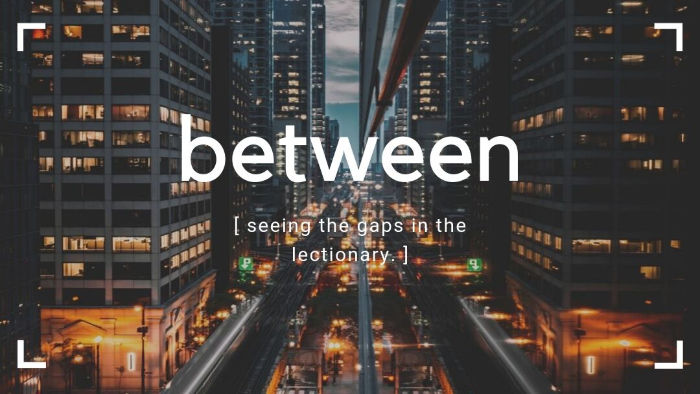
A look at the gaps in the lectionary.
This week: the gap between Lent 4B and 5B
The text: John 3:22-12:19
When we jump this far in a text, the easy answer to naming what we missed is “everything”. But the two most prominent pieces are these: the immediately preceding story arc and a major ongoing conflict.
Lazarus and the Triumphal Entry
In chapter eleven, we have the famous story of Mary and Martha seeking Jesus out to save their brother’s life. When he doesn’t arrive in time, Jesus grieves with everyone else before raising the man from the dead.
This story serves, not just to show how amazing and generous Jesus is, but to reflect the larger narrative: to intertwine Jesus’s ministry with God’s and offer a provocative echo for what is about to happen.
Lazarus, as a man resurrected, comes to be the sign of Jesus’s public ministry, much like Jesus is the sign of God’s. A sign that becomes the focal point for
The plot to kill him.
Since half the gospel ago, many of the age’s “traditionalists” despised Jesus and his message. And such an idea is familiar enough to us that we might miss what is actually at work in the hatred. That people, at times, take hatred of what people say and link it to the people themselves. This makes sense in some cases and less so in others. We see the difficulty, for instance in racism, where people can be willful, intentional racists and also unwittingly racist in what they say.
The distinction between people hating Jesus and hating what he communicates is important for clarity. And further, helps keep us from flying too closely to the universalizing of hatred ourselves.
While the hatred of Jesus is consuming for many of the people in the story, it is his message that motivates them to action. And presents a dark antagonist’s presence for most of the gospel as they seek to stop the message from spreading and potentially silence it forever.
Lazarus becomes such a focal point for this desire to stop the spread of the message. His being alive at all proves the potential truth of what Jesus is communicating, so the desire isn’t only to stop/kill Jesus, it is to do the same to Lazarus.
Approaching Holy Week
For the second week in a row, we get a Holy Week event in the weeks preceding it. For those of us who are obsessed with context, it is hard to decide if we like this or not! We hate that its out of order and context, but it is also stuff for our context when we do get there and won’t be able to do it all.
My own desire is that we overhaul the Lectionary, providing Lent itself as the season of Holy Week, embodying the story in ways that inform and form followers of Jesus to a greater commitment to the whole story—not just the Passion and Resurrection at the end.
This, of course, is a pipe dream. But reflects the challenging character of what it is we seek to do in church on Sunday and with the rest of our formation.
Recognizing the challenge of following the Way of Jesus isn’t really a matter of it being complicated. For we can comprehend it all pretty quickly and naturally. But that it is quite difficult. Particularly when we are at least as wedded to our tradition as we are to Jesus.
